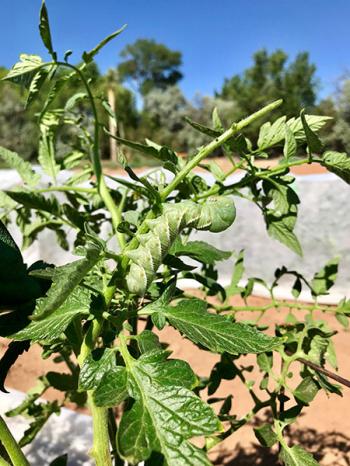July 27, 2019
Saving Seeds for Next Year
This week's column is a reprint, originally written in 2009 by Dr. Curtis Smith, retired NMSU Extension Horticulture Specialist.
Question:
My garden is doing really well this year, and I want to save seeds from my vegetable plants. Are there special things I should do to save the seeds of beans, squash, tomatoes, and chiles? I want to be able to grow these varieties again next year.
- Alice S., Santa Fe
Answer:
If the seeds you planted last spring were hybrid seed, you might not be able to do what you want. Hybrid seeds often produce superior plants, but their seeds will not produce the same plants. Heirloom or "open-pollinated" cultivars can be grown from saved seeds to produce plants and fruit like those you harvested this year, but there are potential problems with these cultivars. If there was more than one cultivar of each type of plant, they may have cross-pollinated, and the resultant seeds (and next year's plants) will have been influenced by the genetic characteristics of both parents if there was cross-pollination.
The good news is that beans and tomatoes are often self-pollinated and may not have cross-pollinated. Squash and chiles are more subject to this problem. Even so, you can save the seeds, and you may be satisfied with the result. In the case of seeds saved from hybrid plants, you can also save the seeds, but the chance of the offspring producing the same quality fruit is greatly reduced.
Methods to save the seeds from each of these vary depending on the type of plant. Bean seeds are easy to remove from mature, dried pods. Squash seeds can be removed from the fruit before cooking and spread on paper towels to dry. Chile seeds can be treated much like the squash; just remove the seeds from the chile pods and spread them out to dry on paper towels. Tomato seeds may be treated in the same manner, but it may be better to wash the seeds in running water (in a bowl with water overflowing the bowl) to remove as much pulp as possible from the seeds. Or, you can hand wash them in the bowl, and then spread them on paper towels to dry.

Once all these seeds are dry, carefully package them in labeled (type of vegetable, variety, and year) paper envelopes. Store these envelopes in a cool, dry location. They can be stored in a jar with a desiccant in the refrigerator, or just store them in a dry, cool room. During the winter, many garages are adequate, but do not let them get wet. During the summer, the garage is usually too hot.
In the late winter or spring, you can start plants indoors to transplant outside (tomatoes and chiles), or they may be planted directly into the garden if they can mature their crop early enough (beans and squash). Seed saving can be an interesting addition to your gardening practices.
Additional comments by Dr. Marisa Thompson, NMSU Extension Horticulture Specialist: Seed saving workshops are about to sprout up in communities across the state. One way to find them is to search Facebook for posts with the term “seed saving.” Another is to contact your county’s NMSU Cooperative Extension Service office to find out if seed saving classes will be offered this year in your area. I’ll post links to the activities I hear about on my Desert Blooms blog.
Marisa Y. Thompson, PhD, is the Extension Horticulture Specialist, in the Department of Extension Plant Sciences at the New Mexico State University Los Lunas Agricultural Science Center, email: desertblooms@nmsu.edu, office: 505-865-7340, ext. 113.
Links:
For more gardening information, visit the NMSU Extension Horticulture page at Desert Blooms and the NMSU Horticulture Publications page.
Send gardening questions to Southwest Yard and Garden - Attn: Dr. Marisa Thompson at desertblooms@nmsu.edu, or at the Desert Blooms Facebook page.
Please copy your County Extension Agent and indicate your county of residence when you submit your question!